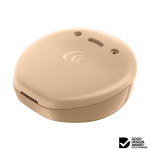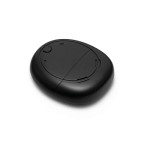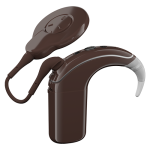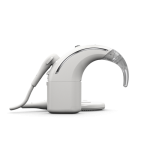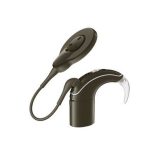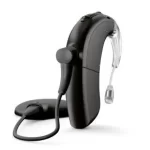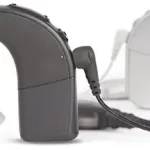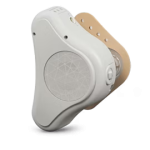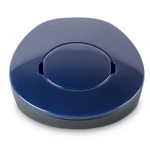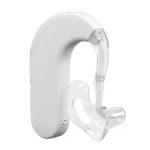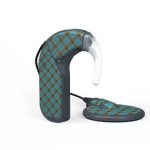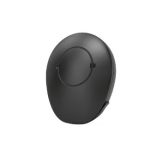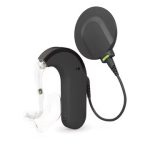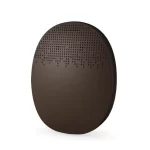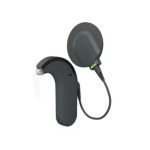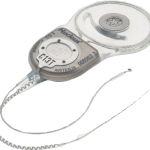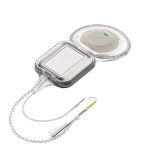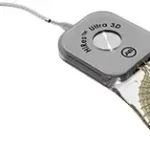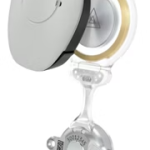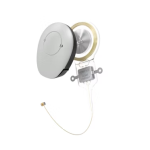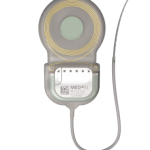Cochlear Implants
Cochlear implants are electronic devices that can provide a sense of sound to people who are deaf or severely hard-of-hearing. The implant is surgically placed under the skin behind the ear and works by sending electrical signals directly to the auditory nerve, bypassing the damaged parts of the inner ear. The signals are then sent to the brain, which perceives them as sound. While not a cure for deafness, cochlear implants can significantly improve the quality of life for many people by enabling them to communicate more effectively and enjoy a wider range of sounds.
Was your child born deaf?
Can you only hear in one ear?
Are you experiencing hearing loss that is no longer improved with the use of hearing aids?
If your answer is yes to any of these questions, then a Cochlear Implant may help you, or your child, to hear better in everyday life with both rehabilitation and habilitation.
Cochlear Implant
Cochlear implant in short CI is essentially a technology that gives people with severe to profound deafness a sense of hearing. The inner ear’s hair cells suffer damage in this type of hearing loss and are unable to effectively detect sounds.
By passing these damaged hair cells, a cochlear implant transmits electric signals to the brain, where they are processed as sound. The purpose of cochlear implants is to mimic natural hearing and take the place of the inner ear. (cochlea). Electrical signals are used in implants to directly stimulate the auditory nerve (the nerve that carries sound from the cochlea to the brain) to help those whose sense of hearing is impaired.
The idea is to give those with deafness access to the range of speech sounds. Results can include hearing speech to being aware of environmental sounds, depending on the person.
Cochlear Implant Services Offered by Shono Bangladesh
Shono Bangladesh is a promising and reliable institution that provides individuals with a range of essential services pertaining to cochlear implants. These services include:
- Evaluation of hearing
- Assessment tests
- Counselling
- Help you to choose perfect Implant according to need
- Audio Verbal Therapy for both Habilitation and Rehabilitation
- Programming the device for better hearing
- Proper guidelines and suggestions
The team at Shono Bangladesh consists of highly experienced and skilled audiologists and speech-language pathologists who are dedicated to providing personalized care to each patient. With their range of specialized services, Shono Bangladesh is committed to improving the quality of life of those who experience hearing loss and providing the best hearing aids at affordable prices in Bangladesh.
Choose Your Processor
Choose Your Implants
Determining Eligibility for Cochlear Implantation
There is a list of Cochlear implant candidates. Cochlear implants are required for those who belong to any of these categories:
- those who are severe to profoundly deaf.
- a hearing loss that makes verbal communication difficult.
- individuals who cannot perceive speech.
- those who, according to professional hearing tests, receive little or no benefit from hearing aids.
- those who suffer from profound or severe “nerve deafness.”
- Motivated to engage in hearing Rehabilitation and to be a part of the hearing world.
- realistic expectations about the benefits and limitations of cochlear implants on hearing.
Advantages of Cochlear Implant
For people who have severe to profound hearing loss, cochlear implants can be life-changing. The implant is surgically placed under the skin behind the ear, with an electrode array inserted into the inner ear. This array stimulates the auditory nerve, allowing the individual to perceive sound.
The advantages of cochlear implants can be numerous.
- Makes it easier to interact and socialize with friends
- For children helps to achieve developmental milestones.
- Gradually develops a better relationship with family members
- Improved hearing in daily life
- Make people independent
- The overall quality of life enhances
- The capacity to hear speech without relying on visual clues like lipreading
- Recognizing common environmental noises
- Being able to hear in a busy setting
- The ability to pinpoint the origin of sounds
- Having the ability to hear music, TV programs, and phone calls
It’s important to note that cochlear implants may not be appropriate for everyone with hearing loss, and candidacy for the procedure should be evaluated on an individual basis. However, for those who are eligible, cochlear implants can provide a significant improvement in hearing and overall quality of life.
Appropriate Age for Cochlear Implant
Individual differences exist in cochlear implant surgery. Results of cochlear implantation are influenced by factors as the age of patient at the time of hearing loss and the time interval between hearing loss and the procedure.
- If a child is born with profound hearing loss, receiving a cochlear implant at an early age usually yields the best results. A congenitally deaf child needs cochlear implant surgery before the age of three, preferably earlier.
- For older adults, they can have cochlear implantation at any age.
- The best outcomes for adults are typically linked to a shorter time of profound hearing loss before cochlear implantation.
- Cochlear implants typically provide less benefit for adults who have little to no aural experience.
Although both adult groups often experience improved outcomes after cochlear implantation.
About The Device and How Cochlear Implant Works
There are many parts of a cochlear implant of which two are the basic i.e., the external part which is worn on the body, and the internal part which is not visible from the outside.
- The hidden internal component is a receiver with a magnet that is embedded under the skin.
- The microphone and sound processor are found as the exterior components, which are worn on the body.
A cochlear implant takes in sounds from the environment, interprets them, and delivers impulses via the auditory nerve to the brain via the implanted receiver through the skin. With habilitation, the brain becomes more adept at identifying the signals, which the patient then perceives as “hearing.”
Three steps make up the procedure:
- surgical implementation of the device i.e., Cochlear implant.
- activation and programming of the cochlear implant.
- The rehabilitation and habilitation for progress
Cochlear Implantation Process for The Best Outcome
Cochlear Implant Surgery
The surgery is basically an interprofessional team approach and includes several stages. The team mainly consists-
- Audiologists
- Counselor
- Otolaryngologists
- Anesthesiologists
- Physicians
The stages take place Before, During, and After the surgery.
Before the procedure
A thorough medical evaluation is required to decide whether cochlear implants are a good option for you or your kid. A medical professional, like as an audiologist and Surgeon, will perform an assessment to determine the optimal cochlear implant type for your need that might include:
- hearing, speech, and occasionally balance tests
- physical examination to determine anatomy and health status
- MRI or CT scans of the skull to examine the cochlea and other inner ear structures.
During the procedure
Cochlear implant surgery is performed at the well-equipped operating room of the hospital. The length of the procedure can be few hours usually depending on the patient. The surgery is performed under general anesthesia.
- To guide the electrode to the cochlea, the surgeon makes a small incision behind the ear and then cuts a hole in the mastoid bone.
- Implant electrodes are positioned within the cochlea for cochlear implantation.
- The pocket between the muscle and bone behind the ear is where the surgeon inserts an internal processor. An external voice processor that will be worn outside the skin delivers information to the internal processor.
- The wounds are then stitched up, and the patient is brought into the recovery area where he or she is carefully observed for recovery from the anesthetic.
After the procedure
You or your child may experience the following for a brief period of time-
- Pressure or soreness above the ear where the implant is located
- sickness or vertigo
After a few days following surgery, the majority of individuals feel well enough to go home. An audiologist will then turn the gadget on after allocated time of recovery.
Activation & Programming of The Cochlear Implant
After a set amount of time has passed since the operation, an audiologist will invite you to come in to have the cochlear implant activated and programmed so you can benefit from it to the fullest. You will be shown how to use the external processor on the ear by the audiologist. The objective is to make the brain and nerves get used to of hearing.
The sound you initially hear may seem unusual when it is turned on for the first time, but with time and listening practice, it will start to sound more normal. You will adapt to your cochlear implant more quickly and benefit more from it as you use it more frequently.
After activation, a series of programming appointments are scheduled. Most people don’t understand that the sounds are coming through the implant during the initial programming appointments. Together, your audiologist and auditory rehabilitation therapist (AVT) will help you create a strategy for teaching your brain to process sounds in a way that is compatible with your lifestyle. This will require a lot of “homework,” like performing listening drills at home.
Following that, programming appointments are frequently required for adjusting the specification of the implant as per clients requirement. These appointments enable the care team to monitor the patient’s development as the brain develops the ability to interpret sounds those are being heard. Review appointments helps to track your development and, if necessary, ask to fine-tune your processor.
Habilitation & Rehabilitation for Progress
Even though the cochlear implant makes sound accessible, comprehension requires more than simply hearing. A quality rehabilitation program improves the patient’s capacity to recognize, mimic, and connect the meaning of spoken language to its sounds.
Typically, an audiologist, speech-language pathologists, educators of the deaf, and other specialists make up the cochlear implant rehabilitation team. They collaborate to create a road to success for each patient by offering guidance, analysis, and feedback to assist create the finest cochlear implant-based hearing system. People benefit greatly from the support and encouragement of friends and family.
Depending on how you heard before getting a cochlear implant, the rehabilitation regimen will vary:
- People who have never heard before could require rigorous, individualized therapy.
- A program that emphasizes assisting individuals in making the most of their usage of cochlear implant may be available to those who are rediscovering their hearing.
You can maximize the use of your cochlear implants by scheduling routine, lifelong follow-up visits to inspect and program the device and do auditory testing.
Final Verdict
The cochlear implant, a tiny electronic device, offers the sound clarity required for understanding speech and spoken language.
The key is early intervention. As hearing loss progresses, there is less room for improvement. This is especially true for children, who may benefit more from an implant the earlier it is given to them.
To attain the best hearing abilities following surgery, rehabilitation and training are necessary.
Frequently Asked Questions
You will undergo testing before getting a cochlear implant to determine whether the device will be beneficial. The auditory nerve, which transmits sound to the brain, must be functioning normally in order for the implant to function.
- Cochlear implant surgery is performed under general anesthesia. Before surgery, the staff will provide instructions. This can entail ceasing to take specific medications or supplements for a predetermined period of time.
- May be advice to refrain from eating or drinking for a duration before heading the operating room.
You will receive detailed preparation instructions from your surgeon.
When to release the patient will be decided by the team based on the patient’s general medical status. After a few days of observation, the patient is released. A few weeks after the incisions are made, the device will be programmed, giving the wounds time to heal. You won’t be able to use any hearing aid in the ear which had the surgery during this period.
About a week after the procedure, the surgeon will examine the incisions and take out the stitches at a follow-up session. It is typically recommended to give the area three to four weeks to heal before turning on the cochlear implant.
After the procedure, the doctor should be informed if there is increased discomfort, edema, drainage, or fever.
Cochlear implants are made to be reliable and safe. It’s important to use caution when using them, though. Manufacturers of cochlear implants offer specific recommendations for their products. The precautions and warnings that have been issued for your specific device will be presented by your implant center. It’s crucial that you follow this advice in order to protect yourself, the implant, and the sound processor. For some medical treatments and therapies, medical imaging, cosmetic operations, and recreational activities, this may entail adhering to special guidelines. Some medical procedures are not suited for people with cochlear implants, particularly those that entail heat, electricity, or vibrations near the cochlear implant. You will receive more detailed guidance and information from your implant center.
Living with wearing a cochlear implant will be lifelong. In the event that you face any problematic concern, your implant center will assist you and offer extra parts and replacements if there is any faults in your implant.
Surgery for cochlear implants is a risk-free procedure, and complications are uncommon. There are hazards with any operations, though. They consist of:
- Bleeding
- Swelling
- Infection near the implant
- An earache
- Nausea and vertigo
- Tingling in the ears
- Damage to the facial nerve may result in issues with the face’s ability to move.
- Meningitis
- dangers of general anesthesia
Depending on the patient’s medical state, there can be additional dangers. Any worries should be brought up to the surgeon before the operation.
It’s a significant choice of getting a cochlear implant. You will have your implant for a very long time, so it’s crucial to consider the effects it will have both now and in the future.
In terms of medical prosthesis, cochlear implants rank as the most successful because less than 0.2% of recipients reject or do not use them, and just 0.5% of them fail and require reimplantation.
Additionally, the program is different for adults and children:
The new auditory signal that the cochlear implant provides will help children who have suffered hearing loss since birth to create a language system, but adults must learn to give meaning to their existing language system. Soon after the implant is turned on, children begin receiving rehabilitation services, including a type of therapy called Auditory Verbal Therapy (AVT).
Depending on the situation, adult rehabilitation could start with an initial consultation. The rehabilitation plan takes into account the patient’s requirements for auditory verbal therapy, communication management, and environment adjustment. A treatment plan for additional services will be suggested by the therapist in light of the findings of this functional evaluation.
To utilize the cochlear implant to its fullest capacity, both children and adults must be immersed in an environment that is rich in auditory stimulation.
The brain will gradually come to recognize the implant stimulation patterns over several months after surgery, enabling speech comprehension. Volume adjustments will help to handle the changes as hearing becomes more sensitive.
- Bangabandhu Sheikh Mujib Medical University, Dhaka
- Combined Military Hospital
- National Institute of ear, Nose and Throat
- Mitford Hospital
- Shono Bangladesh
Book an Appointment
Find an Expert
Hearing care professionals can help you make the choice that is perfect for you. They will consider your hearing needs, your budget, your lifestyle and your individual hearing preferences.
Our Locations
ECB chattar (Main branch):
571, 7th floor, adept moitri complex, ECB Chattar,
Dhaka cantonment, dhaka 1206.
Mirpur Branch:
House-02, Road-03, Block – A, Near Metro Rail 238 no. piller, Mirpur-10, Dhaka-1216.

